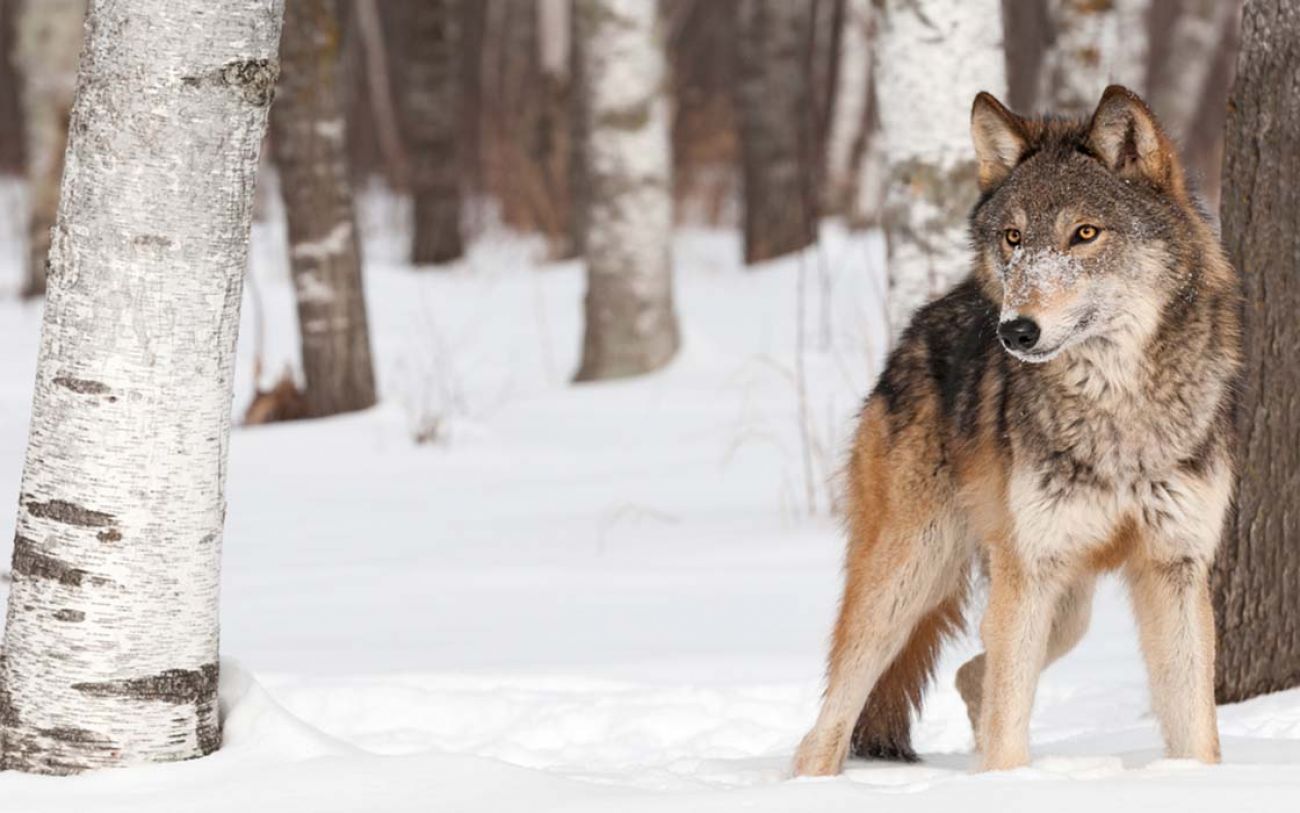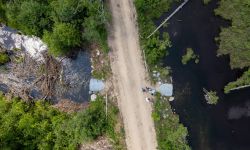Wolves face genetic challenge in Michigan’s Isle Royale, study says

Relocating wolves to Isle Royale may only be a temporary solution to the island’s diminishing wolf population, according to a recent study.
The population has declined rapidly in recent years. In 2010, 19 wolves lived on the island. By 2016, that number had dropped to two.
The researchers used blood samples collected over the past 30 years to analyze the wolves’ DNA.
“We thought it was time for full genome analyses for as many of these wolves as possible to try and figure out some of the genetic details of the genetic collapse,” said Rolf Peterson, a research professor at Michigan Technological University and a member of the study’s research team.
- Nov. 2019: Michigan DNR said it killed wolves to protect humans. Then we got its emails.
- Related: The debate is on: Will wolves move to Michigan’s Lower Peninsula?
The researchers found that genetic rescue—the introduction of new genes into a population to increase genetic diversity—can reduce problems associated with inbreeding. But those positive effects may only be temporary.
They also discovered that genetic rescue created problems that led to the rapid decline of the island’s wolf population.
Here’s what happened:
In the late 1990s, a male wolf migrated from the mainland across an ice bridge to Isle Royale. He dominated the island’s native wolves and mated with a female from the island, according to the study.
Through the genetic work, the researchers found that the descendants of these wolves rapidly dominated the genetic ancestry of the population. The wolf from the mainland won out.
“At one point, almost 60 percent of the genes on the island were from him,” said Philip Hedrick, a population geneticist and conservation biologist at Arizona State University and a researcher on the study. “That’s astonishing. I’ve never heard of a situation quite like that.”
Eventually, the descendants began to breed with one another because no new wolves migrated to the island. That led to something called “inbreeding depression,” or the tendency for small, inbred populations to decline.
“All inbred populations tend to collapse,” Peterson said.
The introduction of a single wolf increased the population’s genetic diversity initially, but ultimately resulted in descendants that were extremely similar genetically and unable to produce viable offspring, which led to the population’s drastic reduction in size.
“I think this was kind of an extreme case where the positive effect was so strong that it ended up resulting in a negative effect,” Hedrick said.
Genetic rescue will likely only have relatively short-lived effects, Peterson said.
“It might be 20 years,” he said. “But it’s all temporary.”
The researchers think that the same thing may happen but at a slower rate with the current effort to restore wolves to control the exploding moose population.
“The island is almost totally isolated from the mainland,” said Jacqueline Robinson, an evolutionary geneticist at the University of California, San Francisco, and a researcher on the study. “It’s highly likely that over time, inbreeding will once again set in. It’s kind of inevitable.”
The National Park Service has begun relocating new wolves to Isle Royale to keep the island’s population from becoming extinct. They plan to relocate between 20 and 30 wolves to the island over the next few years.
Although 30 sounds like a lot, it would not be enough in the long run, Robinson said.
The wolves are from different source populations, which is a good thing, Peterson said.
“Instead of trying to copy nature and relocating a pair, this is a better founding population,” he said. “Then you start right away with a real mixed bag of genes.
“That’s better because you won’t see that inbreeding showing up quite as fast.”
If ice forms across Lake Superior and new wolves travel to the island, that will counteract the effects of inbreeding, Hedrick said.
However, without the formation of ice bridges and the movement of new wolves to the island, eventually all of the wolves would be inbred again.
With warmer, more windy winters as a result of climate change, ice bridges do not form as often as they used to, Peterson said.
Human intervention may once again be necessary to save the population.
“There may be a reason to periodically introduce wolves to the island to mimic what would have happened in the past,” Hedrick said.
A more regular introduction of new wolves to the island by humans would help prevent inbreeding, Robinson said.
Even if the effects are only temporary, Peterson said he believes it’s a good thing that humans have stepped in to save the population.
The wolves are the only natural predator for the island’s moose population, which has exploded in recent years due to the wolf population’s decline, Peterson said. Without wolves to hunt them, the moose will ravage the island’s forest and eventually begin to die of starvation.
“The National Park Service has taken it upon themselves to direct nature in what I consider to be a very positive direction,” he said. It’s crucial to save the island’s ecosystem.
“The real value of Isle Royale, in my mind, is not that it’s some kind of untouched wilderness, because that’s a myth,” Peterson said. “The value today is that it’s a system with a top carnivore, a large herbivore and a forest—none of which is being exploited by people.”
Editor’s note: Kaley Fech is a contributor to Capital News Service. This article was originally published April 18 by the Great Lakes Echo, a project of the Knight Center for Environmental Journalism at Michigan State University.
Michigan Environment Watch
Michigan Environment Watch examines how public policy, industry, and other factors interact with the state’s trove of natural resources.
- See full coverage
- Subscribe
- Share tips and questions with Bridge environment reporter Kelly House
Michigan Environment Watch is made possible by generous financial support from:
Our generous Environment Watch underwriters encourage Bridge Michigan readers to also support civic journalism by becoming Bridge members. Please consider joining today.
See what new members are saying about why they donated to Bridge Michigan:
- “In order for this information to be accurate and unbiased it must be underwritten by its readers, not by special interests.” - Larry S.
- “Not many other media sources report on the topics Bridge does.” - Susan B.
- “Your journalism is outstanding and rare these days.” - Mark S.
If you want to ensure the future of nonpartisan, nonprofit Michigan journalism, please become a member today. You, too, will be asked why you donated and maybe we'll feature your quote next time!






